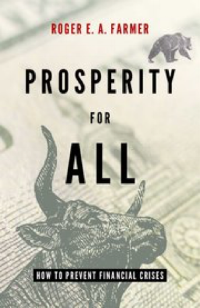To maintain the roads, railways, airports and bridges, the government must continue to invest in public infrastructure. And public investment should be financed by borrowing, not from current tax revenues.
Chart 3 shows that investment in public infrastructure was, on average, equal to 4.3% of GDP in the period from 1948 through 1983. It has since fallen to 1.6% of GDP. There is a strong case to be made for increasing investment in public infrastructure. First, the public capital that was constructed in the post WWII period must be maintained in order to allow the private sector to function effectively. Second, there is a strong case for the construction of new public infrastructure to promote and facilitate future private sector growth.
The debt raised by a private sector company should be strictly less than the value of assets, broadly defined. That principle does not apply to a nation state. Even if government provided no capital services, the value of its assets or liabilities should not be zero except by chance.
National treasuries have the power to transfer resources from one generation to another. By buying and selling assets in the private markets, government creates opportunities for those of us alive today to transfer resources to or from those who are yet to be born. If government issues less debt than the value of public capital, there will be an implicit transfer from current to future generations. If it owns more debt, the implicit transfer is in the other direction.
The optimal value of debt, relative to public capital, is a political decision. Public economics suggests that the welfare of the average citizen will be greatest when the growth rate is equal to the interest rate. Economists call that principle the golden rule. Democratic societies may, or may not, choose to follow the golden rule. Whatever principle the government does choose to fund its expenditure, the optimal value of public sector borrowing will not be zero, except by chance.
Recommendations for the Autumn Statement
What can we learn from these three facts and what should we look for in the Autumn statement?
We should not be too concerned about a debt to GDP level approaching 100%. We have been there before and we will go there again. We should be concerned that public spending has shifted away from investment on the capital account and towards the current account.
Economics has the reputation of being the dismal science. It is a dismal reality that there are diminishing returns to the prolongation of life. As we invest an increasing share of resources into advanced drugs and new treatments, the additional benefits, measured in extra weeks of life, will shrink.
As the population ages and life expectancy increases there will be an increasing burden on pensions and the National Health Service. These expenditures are predictable and can be planned for by stabilizing the deficit on the current account either through limits on expenditures or through increased taxes. Our politicians must choose how much, as a society, we spend on health. And this choice must be presented to the electorate.
Capital account expenditures should be separated from the current account and increased back to 1960s levels. Work by Paul Romer, the new Chief Economist of the World Bank, suggests that these expenditures have the potential to pay for themselves. He advocates the creation of new charter cities and the expansion of existing cities. The last coalition government’s proposal to create a ‘Northern Powerhouse’ is an example of an investment of this kind.
There are also strong economic arguments to consider education expenditures at all levels, primary, secondary and tertiary, to be a capital expenditure. Education is an investment in the British people from which we all gain. But as with all capital expenditures, investment in education should be targeted towards the areas that have the highest potential for social impact.
This post is mirrored in the NIESR site and the Bath IPR Blog.










